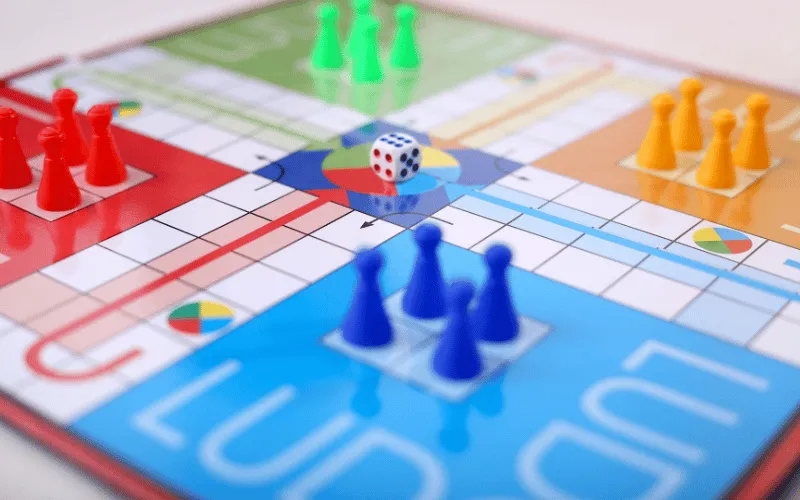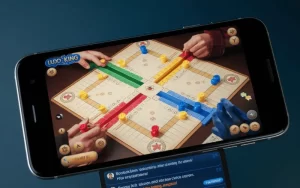The Ludo game is a timeless classic that has entertained people of all ages for decades. Originally derived from the ancient Indian game Pachisi, Ludo has evolved into one of the most recognized and played board games in the world. With the advent of smartphones and internet connectivity, this game has successfully transitioned into the digital world, gaining even more popularity.
In this article, we’ll explore the history, rules, variations, and growing online presence of the Ludo game, along with the reasons why it remains a favorite in households globally.
The History of Ludo
Ludo’s roots can be traced back to Pachisi, a game played in ancient India as early as the 6th century. The game was typically played on cloth boards with cowrie shells used as dice. The objective was similar—to race tokens to the finish point through strategic moves and dice rolls.
In 1896, a simplified version of Pachisi was patented in England by Alfred Collier under the name “Ludo,” which is Latin for “I play.” The game board was redesigned into the familiar cross-shaped layout, and dice replaced the cowrie shells.
Since then, Ludo has become a staple board game around the world, known by different names such as Parcheesi in the USA, Parchís in Spain, and Uckers in the UK Navy.
How to Play Ludo
The Ludo game can be played by 2 to 4 players, each assigned a color—red, blue, green, or yellow. The goal is simple: move all four of your tokens from your starting area to the center of the board (the “home” area) before your opponents do.
Basic Rules:
- Starting the Game: Each player rolls a die. To move a token out of the base, the player must roll a 6.
- Movement: Tokens move clockwise around the board based on the number rolled.
- Rolling a 6: Grants an extra turn. If a player rolls three 6s in a row, the turn is forfeited.
- Capturing: If your token lands on an opponent’s token, it is sent back to their base.
- Safe Zones: Some squares are safe zones where tokens can’t be captured.
- Winning: The first player to get all four tokens to the home area wins the game.
Types of Ludo Games

With technology, various digital versions of the Ludo game have emerged. Some popular types include:
1. Offline Ludo Board Game
The traditional physical version played using a board, dice, and tokens—perfect for families and friends during gatherings.
2. Online Ludo Apps
Apps like Ludo King, Ludo Star, and Ludo Club allow players to compete against friends or random players online in real-time. Features include:
- Chat options
- Emoji reactions
- Custom rules (e.g., two 6s instead of three)
- Tournaments and leaderboard rankings
3. Multiplayer Ludo
These versions support up to 6 players and include modes like 2v2 team play, making the experience more competitive and engaging.
Why Is the Ludo Game So Popular?
1. Simple and Easy to Learn
Ludo is a game that children and adults can understand within minutes, making it universally accessible.
2. Nostalgia Factor
For many, playing Ludo brings back fond childhood memories, enhancing its emotional appeal.
3. Strategic Yet Fun
Although Ludo involves luck (dice rolls), it also requires strategic planning, especially when deciding which token to move or whether to capture an opponent’s token.
4. Social Interaction
Whether played on a board or online, Ludo fosters interaction, laughter, and friendly rivalry, making it a great social game.
5. Availability on All Platforms
Thanks to mobile apps, the Ludo game is now available on Android, iOS, tablets, and even desktops. Players can enjoy it anytime, anywhere.
Educational and Cognitive Benefits of Playing Ludo
Believe it or not, playing Online Ludo can offer cognitive and developmental benefits, such as:
- Improved counting and math skills (ideal for kids)
- Enhanced strategic thinking
- Better decision-making
- Increased patience and focus
- Social skill development through teamwork and turn-taking
Ludo Game in the Modern World
The Ludo game saw a massive rise in popularity during the COVID-19 lockdown when people sought online games to stay connected with friends and family. Ludo King, in particular, became one of the most downloaded games globally during that time.
Today, Ludo is used in esports tournaments, cash contests, and even real-money gaming platforms. It has become more than a leisure activity—it’s now part of the online gaming industry.
Tips to Win the Ludo Game
- Spread Out Tokens: Don’t focus on just one; spread your tokens to increase movement options.
- Prioritize Captures: Eliminate opponents’ tokens when safe—it delays their progress.
- Use Safe Zones Wisely: Protect your tokens by placing them on safe squares when possible.
- Think Ahead: Anticipate your opponent’s next move and adjust your strategy accordingly.
Conclusion
The Ludo game is proof that simple, classic games never go out of style. From ancient origins to modern digital platforms, it continues to bring joy, competition, and connection across generations. Whether you’re playing for fun or competition, Ludo offers a rich gaming experience rooted in culture, strategy, and entertainment.
So roll the dice, plan your move, and enjoy the game that has stood the test of time—Ludo!



















